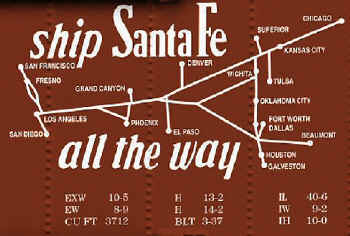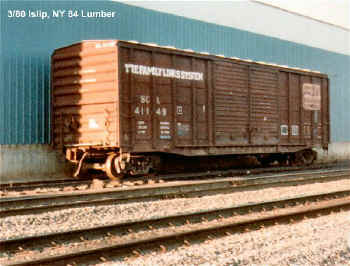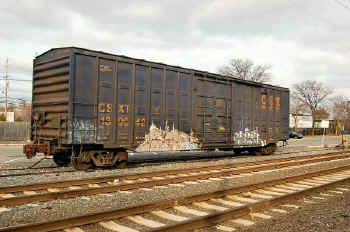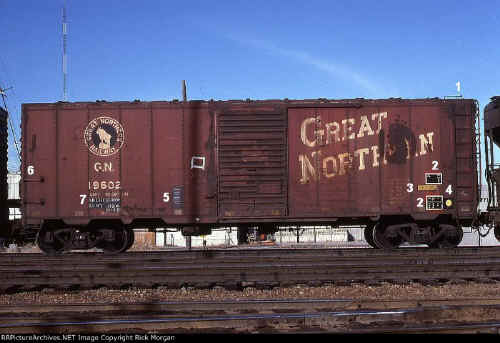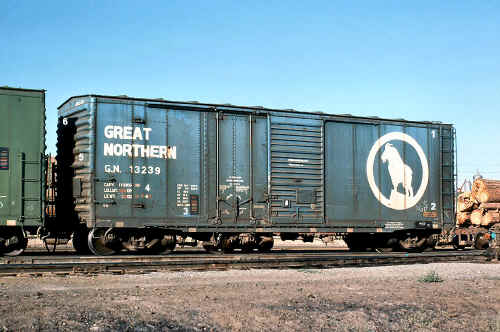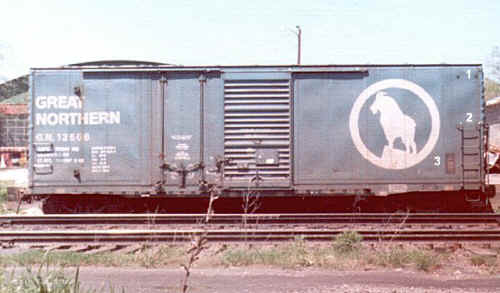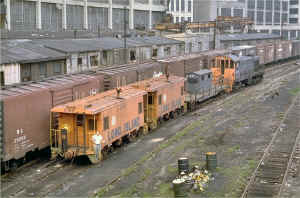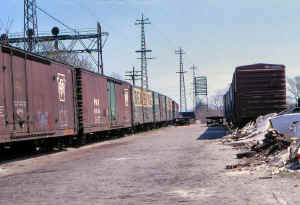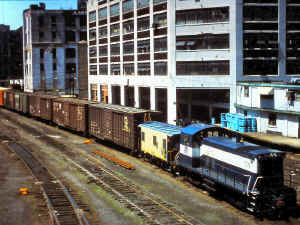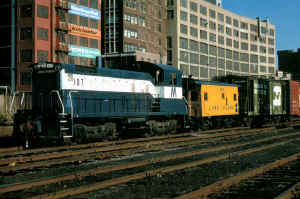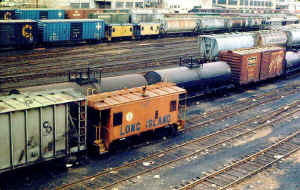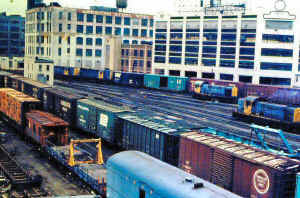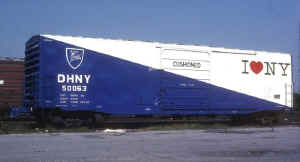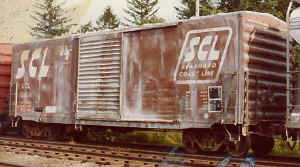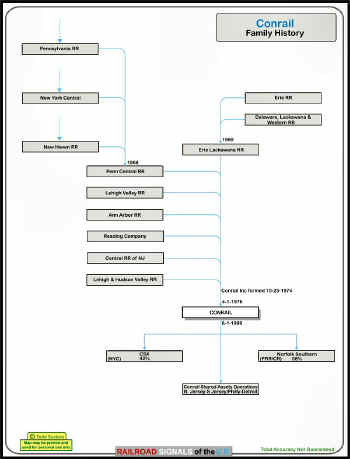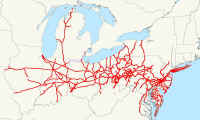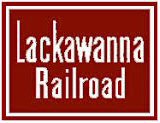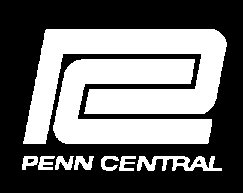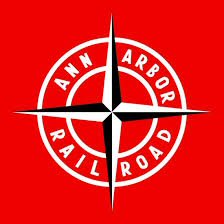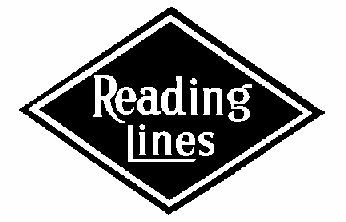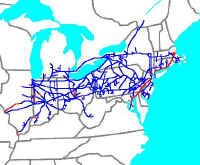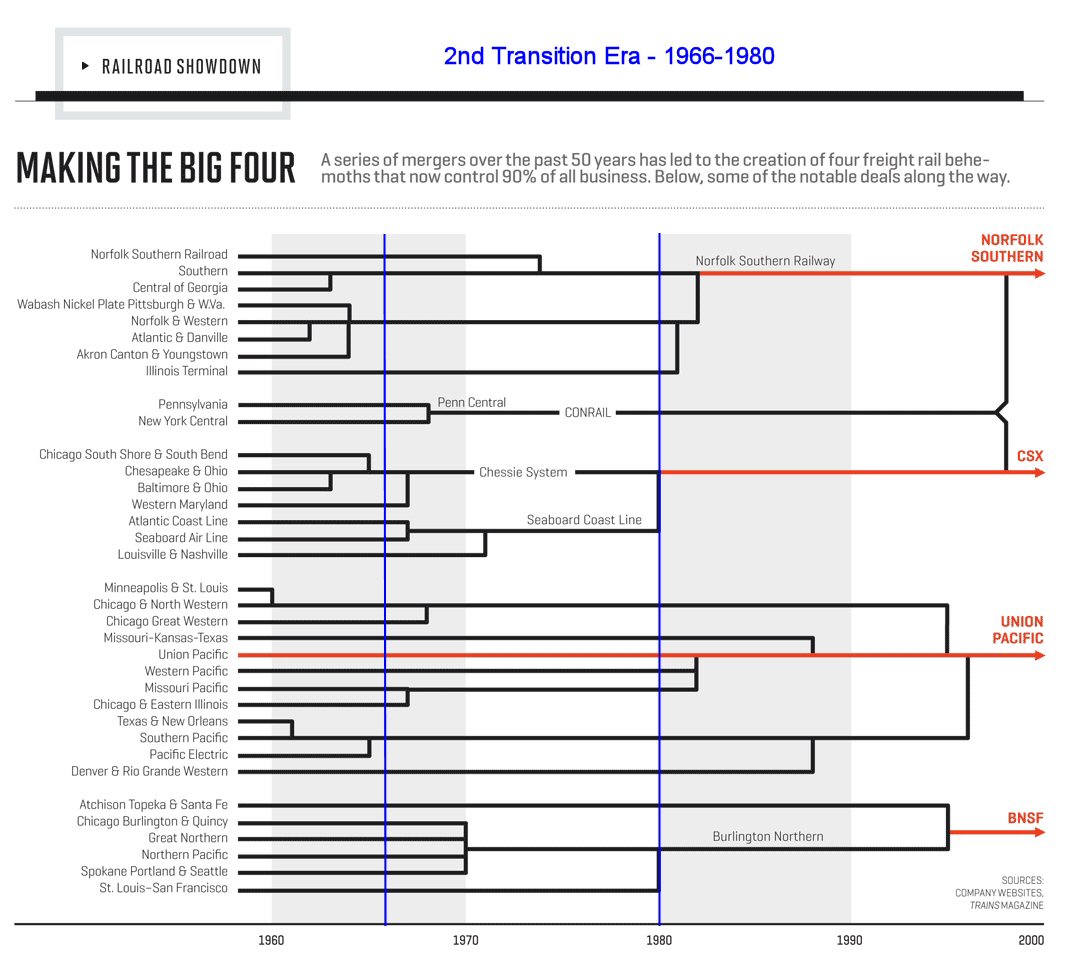2nd
TRANSITION RAILROAD ERA
A Brief History 1966 - 1980
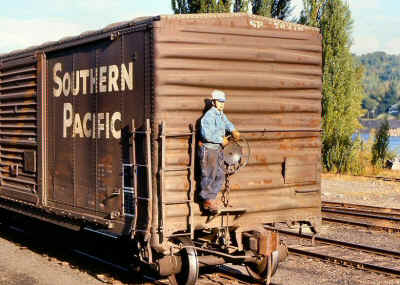
AAR INTERCHANGE RULES BY YEAR
1966: 10/01/66 Federal ban on running boards for new cars
delivered. CFR
Title 49 Subtitle B Chapter II Part 231 Section 231.27
1967: 1/01/1967 High mount hand brakes prohibited on new cars
1968: ACI labels introduced
1970: Initial proposed date to require ACI labels in
interchange
1972: Final date for ACI labels required in interchange.
AAR recommends single-panel COTS stencil, for new & rebuilt cars
1974: Running boards to be removed from all cars (extended).
Two-panel COTS stencil required by FRA, all cars
1978: White dot/yellow dot wheel inspection begins. ACI
labels no longer required for interchange
1981: White dot/yellow dot wheel inspection ends
1982: Third version COTS, Jan 1 1982
1983: Running boards outlawed on all boxcars/reefers
Note: Items in italic indicate lettering/stencil changes
|
PER DIEM BOXCARS HISTORY- EXAMPLES |
|||||||||||||||||||||||||||||||||||||||||||||||
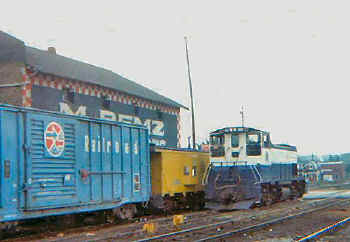 1977-1980
Boxcar Building Boom: A boxcar shortage in the 1960s and early
1970s turned into a glut by the early 1980s. Thousands of newly
FMC manufactured 50-foot, 70-ton boxcars entered service in the
late 1970s, many of which were acquired by private investors (ITEL
RAIL) and short line railroads (RVRR, M&NJ, McCloud River,
etc.) for revenue service. 1977-1980
Boxcar Building Boom: A boxcar shortage in the 1960s and early
1970s turned into a glut by the early 1980s. Thousands of newly
FMC manufactured 50-foot, 70-ton boxcars entered service in the
late 1970s, many of which were acquired by private investors (ITEL
RAIL) and short line railroads (RVRR, M&NJ, McCloud River,
etc.) for revenue service.
LIRR #161 spotting a Pickens RR or a St. Lawrence RR per diem boxcar at M. Remz, Port Jefferson 8/04/1979. Commonly owned, such as M&NJ, by the National Railroad Utilization Corp. The Pickens and St Lawrence cars had the word "Railroad" on the right side of the car.
|
|||||||||||||||||||||||||||||||||||||||||||||||
|
In the late 1960's the AAR (Association of American
Railroads) was feeling the impending crunch of a general purpose
boxcar (XM) shortage and moved into action to spur investment in
railroad boxcars. In September 1970, they created and the ICC
approved, something called Incentive Per Diem (IPD). This
additional fee was charged on all XM cars during the 6 highest
traffic months of a year, September - February and was added to
the mileage and normal per diem (per day) fees. These IPD fees
could only apply to newly built or rebuilt boxcars, not old
clinkers from the 40's and 50's. There were limitations on the
number of IPD cars a railroad could make available for
interchange, but if a railroad didn't have any boxcars during a
set of base years they were not limited to the number of IPD
cars they could put into interchange. |
|||||||||||||||||||||||||||||||||||||||||||||||
|
ROOFWALKS/RUNNING BOARDS DETAILS HISTORY - EXAMPLES |
|||||||||||||||||||||||||||||||||||||||||||||||
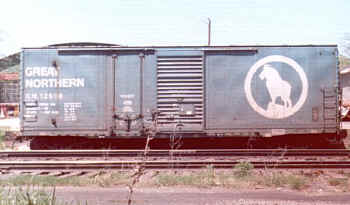 Great Northern XM #12506 Boxcar plug/sliding door Built 1959 Big Sky Blue D&H Yard, Oneonta, NY 3/1972 Photo/Archive: Steven Lynch |
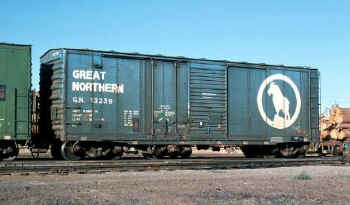 Great Northern #13239 Plug-Sliding Double Door Klamath Falls, OR 8/29/1974 Photo/Archive: Ron Hawkins |
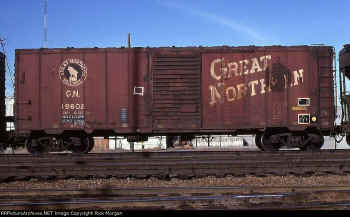 Great Northern #19602 Fort Worth, TX 1/12/1979 Photo/Archive: Rick Morgan
|
|||||||||||||||||||||||||||||||||||||||||||||
| The plug sliding door combination provided a wider door opening coupled with the structural strength of the plug door; for example grain shipments. The center photo of car #13239 shows the effect of heavier weathering and how differing lighting conditions, film, angle of photo, time of day/lighting and age all affect the overall color seen. Note the full length roof ladder has NOT been cut down in this photo. | |||||||||||||||||||||||||||||||||||||||||||||||
 Note that the running boards have been removed in
all the photos, and the A end ladders reduced to four rungs in compliance with the 1966 safety appliance regulations. Additional horizontal grabs have been added to the ends. Adjacent to the B end ladder in the photo of GN
#13239 is the required "keep off roof no running board" yellow warning label. The B end also has a corner grab added to the roof, again per regulation.
Info: Rob Spangler Note that the running boards have been removed in
all the photos, and the A end ladders reduced to four rungs in compliance with the 1966 safety appliance regulations. Additional horizontal grabs have been added to the ends. Adjacent to the B end ladder in the photo of GN
#13239 is the required "keep off roof no running board" yellow warning label. The B end also has a corner grab added to the roof, again per regulation.
Info: Rob Spangler
|
|||||||||||||||||||||||||||||||||||||||||||||||
|
1966 01/10/66 Roof walks/Running boards allowed to be
removed and to be eliminated with all boxcars in service
(without roof hatches) 1966 10/01/66 New freight cars ordered after 4/01/66 and/or delivered after 10/01/66 without roof walks and low hand brakes. These deadlines were routinely extended. 1967 01/01/67 High mounted brake wheels banned. 1974 01/01/74 Roof walks/Running boards and high hand brakes to be removed from all freight cars. This date extended to 04/01/74. 1983 12/31/83 Running boards outlawed on all boxcars/reefers. While 1974 may have been the original target date for roofwalk removal, it didn't hold up. A huge percentage of roofwalks were still in place after that date. Basically, roofwalks started to be phased out starting in '66 (on new equipment) and that continued through the entire decade of the '70s and into 1983. However, most existing roofwalks ended up being removed in the years from the very late '60 to the mid 1970s. Roofwalks could stay even longer for non-interchange cars. |
|||||||||||||||||||||||||||||||||||||||||||||||
|
Freight cars in specific applications had roofwalks and hatches. Monon, for example, had cars purchased in the late 60's with roof hatches, and those cars had roofwalks. They had a low mounted handbrake, and the grabs were low, except for the ones specifically going up to the roofwalk. So, at the same time the roof walkways were eliminated, hand brake wheels were lowered to a point away from the roofs, and an alternate way of getting from one side of the car to the other (end walkways) was provided. This took place on box-type cars first, and later on covered and open-top hoppers. Roofwalk removal did come with some adverse conditions, beginning in the 1960's: Taller box cars, including hi-cube cars (some of the earliest ones did have walkways up there, but lost them quickly). Cushioning devices on box cars increasing the distance between carbodies (extensions to the walkways did little to help that--and there was always the chance that the distance between carbodies could change dramatically in mid-jump). Differing heights for cars in a freight train, and cars such as gondolas and hoppers that had no roof walks at all. What do you do when the next car is a hopper, gondola, or flatcar? This was always a problem, but full height ladders provided the access. Fortunately, box cars became far less prevalent than they were prior to the 1960's. |
|||||||||||||||||||||||||||||||||||||||||||||||
|
ACI LABEL HISTORY |
|||||||||||||||||||||||||||||||||||||||||||||||
|
The AAR had recognized from their field tests that periodic
inspection and label maintenance would be requirements to
maintain a high level of label readability. Regulations were
instituted for label inspection and repair whenever a railcar
was in the repair shop, which on average happened every two
years. Unfortunately the maintenance program never gained sufficient compliance. Without maintenance the read rate failed to improve, and the ACI (GTE KarTrak) system was abandoned by 1977. ACI tags ended. March 1, 1992.
|
|||||||||||||||||||||||||||||||||||||||||||||||
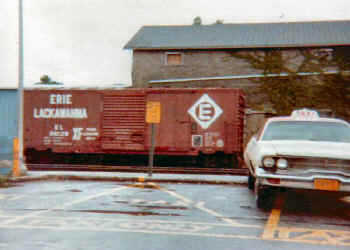 EL boxcar Port Jefferson 1978 Photo: Steven Lynch The era of the 40 foot boxcar wasn't quite dead on April 1st, 1976, and the new Conrail used many of them in those first few years. The writing was on the wall for these steam era freight cars though, and by 1980 most were off the roster or in MOW service. This Erie Lackawanna car was in pretty good shape March 1978 day, and the "XF" Food Service Only" lettering indicates it had an interior lining for food service. Many of these EL cars were used to haul bagged flour out of Buffalo. Few if any 40 footers received a full Conrail paint job. Info: Ron A. Durfee |
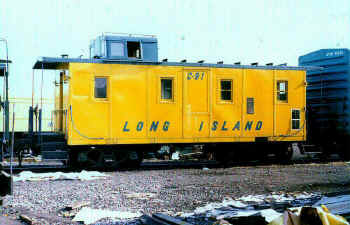 LIRR #91 Holban Yard 1/01/1979 Photo: Tim Darnell LIRR C-91 thru C-96 ex-IC caboose originally built with the side door. Acquired by the LIRR: 1/1972. ACI labels and COTS stencils applied.
|
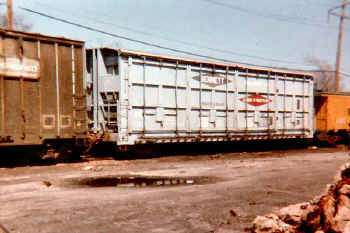 Bennett Thrall lumber car Sayville 3/1980 Photo: Steven Lynch All-door cars were used for dimensional lumber, plywood, siding, and other manufactured building products that needed weather protection, but are not convenient to load through a double-door boxcar. The drawback was the maintenance requirements of the door carriage and latching mechanisms and the vulnerability to damage of the doors and mechanisms, plus a higher capital cost. All-door cars were not uncommon in the 1975-1985 time frame. Bennett Lumber at Princeton, Idaho, had a modest fleet of 50-100 or so.
|
|||||||||||||||||||||||||||||||||||||||||||||
|
CONSOLIDATED STENCILS HISTORY |
|||||||||||||||||||||||||||||||||||||||||||||||
|
|
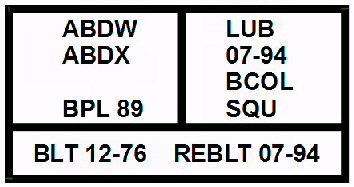 The
AAR began a program of consolidated Stencils in 1972 which
applied to new or rebuilt freight cars only and only had
air brake info. Application to existing
cars was not mandatory. The FRA (Federal Railroad
Administration) created in 1966 issued in July, 1974 a mandate
for all freight cars to begin having the new consolidated
stencils applied. These stencils are applied on the lower
right end when facing the car side. The
AAR began a program of consolidated Stencils in 1972 which
applied to new or rebuilt freight cars only and only had
air brake info. Application to existing
cars was not mandatory. The FRA (Federal Railroad
Administration) created in 1966 issued in July, 1974 a mandate
for all freight cars to begin having the new consolidated
stencils applied. These stencils are applied on the lower
right end when facing the car side.
Defined by the AAR, the large single panel COTS were optional and applied to new and rebuilt cars from 1972 to July 1, 1974. On that date the two part COTS, with the lub info, became mandatory with a deadline of 1979 for application to all cars. Since 1982, subdivided into three or four parts, however shortly thereafter, this was revised to three panels. References 12/1978 RMC, and 1/1982 RMC. Info: Jim Eager COTS: clean, oil, test, and stencil for brake system
|
||||||||||||||||||||||||||||||||||||||||||||||
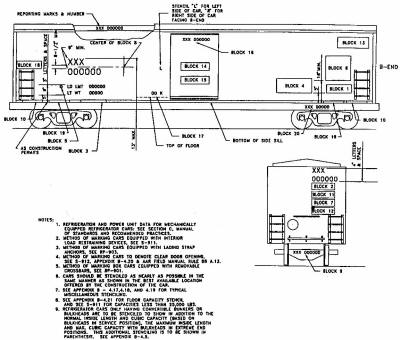 FRA lettering boxcar/refrigerator |
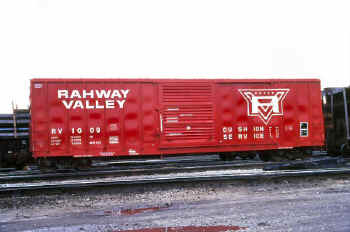 RVRR XM #1009 in action at Riverdale, IL 5/12/1979 Photo: Bill Johnson
|
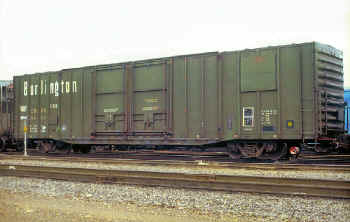 Burlington (CR&Q) #9805 5/1981 Photo: Chuck Zeiler
|
|||||||||||||||||||||||||||||||||||||||||||||
|
U-1 DEFECTIVE WHEEL INSPECTION DOT HISTORY |
|||||||||||||||||||||||||||||||||||||||||||||||
| These stencils were
applied to designate freight cars which had 33" wheels
manufactured by the Southern Wheel Company. These wheels were
suspected of failing in service and causing several serious
derailments. This FRA regulation began March 31, 1978 with the inspection of all 70 ton or less cars which had 33" wheels. Freight cars with this type wheels were stenciled |
|||||||||||||||||||||||||||||||||||||||||||||||
|
|
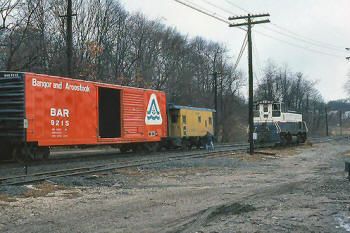 BAR 50' boxcar with defective wheel dot at Sea Cliff prior to 12/1978 |
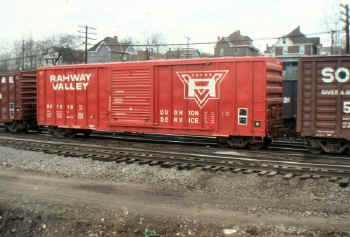 RVRR #1019 Leased from ITEL Rail Corp. September 19, 1978. New cars built up to Dec 31, 1978 had the yellow dots applied at the factory. |
|||||||||||||||||||||||||||||||||||||||||||||
|
|
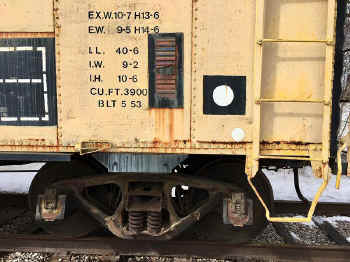 TH&B boxcar Wheel Inspection white dot Photo/Archive: Doug Sword HISTORY SHORT
VERSION:
|
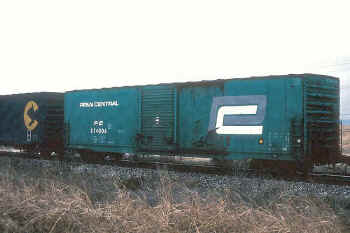 Penn Central #274006 60' boxcar Class X61C No COTS required as applied to new or rebuilt freight cars only. Yellow dot indicates photo March, 1978+ |
|||||||||||||||||||||||||||||||||||||||||||||
|
REPORTING MARKS/DIMENSIONAL DATA |
|||||||||||||||||||||||||||||||||||||||||||||||
|
LT WT (light, or empty, weight) is the weight of the car when empty. This information is important for two reasons. First, it helps determine the load limit for the car. Second, when the car is empty it helps operators asses the actual weight of the train and assign the right locomotives among other things.
|
|||||||||||||||||||||||||||||||||||||||||||||||
|
Steel cars are generally supposed to be reweighed every 30 months (15 for wood), but in practice it is often much less frequent than that. Cars are typically are reweighed when they are serviced. A cars light weight (LT WT) will decrease over the years through wear and tear but may go back up during repairs. Since many loads are billed by weight, having an accurate measure of the car is important. If the car has lost weight over time then the railroad could be hauling some of the load for free as it reads the scales. Conrail (CR) 878330 is a covered hopper. "LO" is the AAR designation for covered hoppers, for example. |
|||||||||||||||||||||||||||||||||||||||||||||||
|
?BLT 3-37? indicates when the car was built (March, 1937.) This information is important to the railroad as many things are tied to the build date of the car including inspection periods, lease / payment accounting and retirement.
|
|||||||||||||||||||||||||||||||||||||||||||||||
|
PLATE C |
|||||||||||||||||||||||||||||||||||||||||||||||
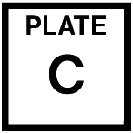 Plate
markings indicate whether a car's extreme outside dimensions
falls within a standard cross-section - a useful thing to know
when restricted clearances are involved. Standard car
cross-section drawings, or plates, are designated Plates B, C,
E, and F. If a car's dimensions are entirely within Plate B (the
smallest), no marking is shown. For cars fitting within Plate C,
E, or F, a square with the appropriate marking is shown. A car
whose dimensions exceed a given plate will display a circle
marked, to use a common example, EXCEEDS PLATE C. Robert S.
McGonigal May 1, 2006 Plate
markings indicate whether a car's extreme outside dimensions
falls within a standard cross-section - a useful thing to know
when restricted clearances are involved. Standard car
cross-section drawings, or plates, are designated Plates B, C,
E, and F. If a car's dimensions are entirely within Plate B (the
smallest), no marking is shown. For cars fitting within Plate C,
E, or F, a square with the appropriate marking is shown. A car
whose dimensions exceed a given plate will display a circle
marked, to use a common example, EXCEEDS PLATE C. Robert S.
McGonigal May 1, 2006 This is a height designation as Plate C indicates a car height of 15' 6 which is standard for most boxcars, covered hoppers and all centerbeam flatcars. Limited interchange service standard (will clear 95% of total rail mileage) adopted 1963. Revised 1983, 1988, 1991. |
|||||||||||||||||||||||||||||||||||||||||||||||
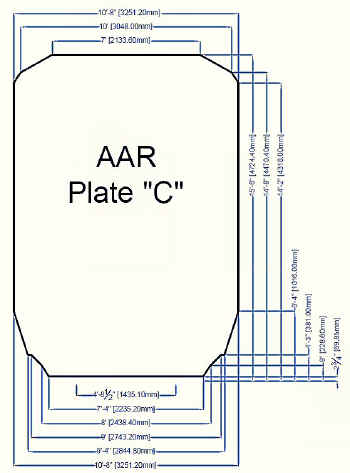 EXW
(extreme width) and H (height above the rail at which that width
occurs) are shown when a car's eaves height (see below) exceeds
12 feet, 0 inches. Cars over 15 feet, 6 inches high will also
display EXH (extreme height) and W (width at that height). EXW
(extreme width) and H (height above the rail at which that width
occurs) are shown when a car's eaves height (see below) exceeds
12 feet, 0 inches. Cars over 15 feet, 6 inches high will also
display EXH (extreme height) and W (width at that height).EW (eaves width) and H (eaves height) show the width and height at the eaves - the edge of the roof projection, which extends over the sides of the car. IL shows the car's inside length. IW shows the inside width. IH shows the inside height. CU FT (cubic feet) shows the volume of the car, based on interior dimensions.
|
|||||||||||||||||||||||||||||||||||||||||||||||
|
1970's BOXCAR FEATURE EXAMPLES |
|||||||||||||||||||||||||||||||||||||||||||||||
|
1. The B end (hand brake) has a corner grab added to the roof, again per
regulation and roofwalk removed as per 1974 reg. 2. Two-panel COTS stencil required by FRA, all cars 1974. 3. "Keep Off Roof No Running Board" yellow warning label. 4. Freight cars that had approved 33" wheels were stenciled March 31, 1978 Yellow dot. 5. Final date for ACI label application 1972 6. Additional horizontal grabs have been added to the ends. 7. Car Weight Data: Load Limit (LD LMT) and Light Weight (LT WT) Reweighed and stenciled 6/1974. Info courtesy: Rob Spangler
Great Northern #19602 Fort Worth, TX 1/12/1979 Photo/Archive: Rick Morgan |
|||||||||||||||||||||||||||||||||||||||||||||||
|
1. The B end (hand brake) has a corner grab added to the roof, again per
regulation and roofwalk removed as per 1974 reg. 2. "Keep Off Roof No Running Board" yellow warning label. 3. Final date for ACI label application 1972 4. Car Weight Data: Load Limit (LD LMT) and Light Weight (LT WT) Reweighed and stenciled 5. Additional horizontal grabs have been added to the ends. 7. The A end (no hand brake) ladder and roofwalk removed as per 1974 reg. Info courtesy: Rob Spangler
Great Northern #13239 Plug-Sliding Double Door Klamath Falls, OR 8/29/1974 Photo/Archive: Ron Hawkins |
|||||||||||||||||||||||||||||||||||||||||||||||
|
1. The
roofwalk been removed. 2. The A end ladders reduced to four rungs in compliance with the 1966 safety appliance regulations. 3. Final date for ACI label application 1972 4. Car Weight Data: Load Limit (LD LMT) and Light Weight (LT WT) Reweighed and stenciled 5. Additional horizontal grabs have been added to the ends. Info courtesy: Rob Spangler Great Northern #12506 "Big Sky Blue" D&H Yard, Oneonta, NY 4/1972 Photo??archive: Steven Lynch |
|||||||||||||||||||||||||||||||||||||||||||||||
| 1. I'll start us off
with RailBox Company (reporting marks ABOX, RBOX, TBOX, FBOX),
Berwick/FMC 50' cars 2. Per diem Boxcars built by FMC in Portland 1977+(?) The distinctive "short line" 50' cars in many schemes: RVRR, McCloud River, PH&D, Middleton & NJ, Providence & Worchester, St. Lawrence, RFP, etc. 3. Thrall All Door Lumber Cars Lignum, Bennett, US Plywood, Weyerhaeuser, Lignum, Illinois Terminal, Celotex, Boise Cascade, Armstrong |
|||||||||||||||||||||||||||||||||||||||||||||||
|
1969 LIRR FREIGHT CARS HANDLED |
|||||||||||||||||||||||||||||||||||||||||||||||
|
|||||||||||||||||||||||||||||||||||||||||||||||
|
LIRR FOOD BUSINESS - 1974 |
|||||||||||||||||||||||||||||||||||||||||||||||
| Brentwood - Hills
Korvette Supermarkets - 1980 cars Bushwick - H.C. Bohack - 550 cars Bushwick - Farmers Food Company - 825 cars Central Islip - Waldbaum - 1327 cars (increased to almost 2000 cars by 1978) Corona - Fodera (Flour) - 386 cars Corona - Great A&P - 358 cars Farmingdale - White Rose - 935 cars (increased to over 1700 in later years) Hicksville - King Kullen - 385 cars Jamaica - Associated Food Stores - 368 cars Long Island City - Ronzoni - 923 cars Maspeth - Great A&P - 678 cars Mineola/Garden City - Great A&P - 621 cars There are over 9300 carloads in this year and that just includes the major food outfits as it does not include the beer/wine/soda distributors and several smaller food companies. How many trucks on the highway does that 9300 car loads equate to? And remember - the population of Long Island is much higher than it was 40+ years ago, so there are even more trucks on the road today. Info: Noah Caplan 2016 |
|||||||||||||||||||||||||||||||||||||||||||||||
BOXCAR LOADS 1950-1970's |
|||||||||||||||||||||||||||||||||||||||||||||||
|
Commodities carried in boxcars in the 1940-1970 period - by
Sam A. McCall |
|||||||||||||||||||||||||||||||||||||||||||||||
EVOLUTION OF CR (CONRAIL) 1976 |
|||||||||||||||||||||||||||||||||||||||||||||||
|
|
NYC + PRR 1968 = PC + NYNH&H in 1969. 1976 Conrail (CR) included the Ann Arbor (bankrupt 1973), Erie Lackawanna (1972), Lehigh Valley (1970), Reading (1971), Central Railroad of NJ (1967) and Lehigh and Hudson River (1972). Controlled railroads and jointly owned railroads such as Pennsylvania Reading Seashore Lines and the Raritan River (1980) were also included. |
||||||||||||||||||||||||||||||||||||||||||||||
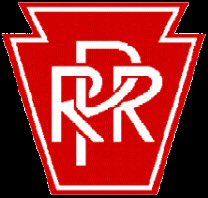
|
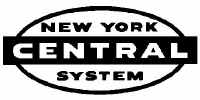
|
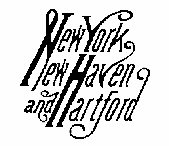
|
|||||||||||||||||||||||||||||||||||||||||||||
|
|
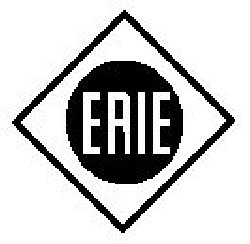
|
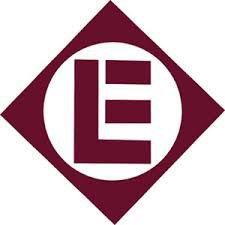
Erie Lackawanna 1960 |
|||||||||||||||||||||||||||||||||||||||||||||
|
|
|
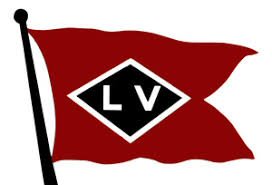
|
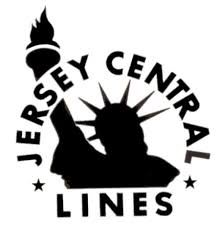
|
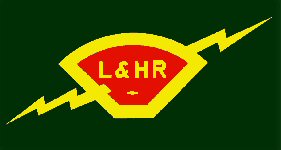
|
|||||||||||||||||||||||||||||||||||||||||||
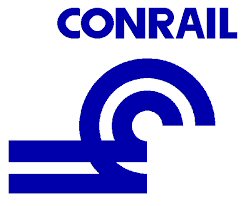
|
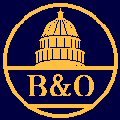
|
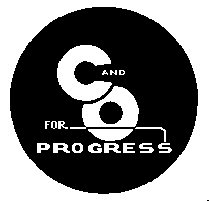
|
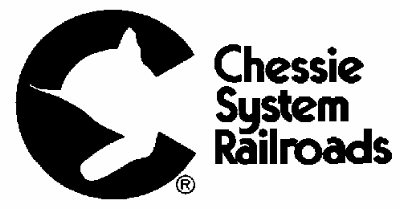
|
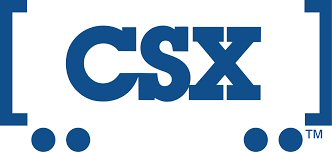
|
|||||||||||||||||||||||||||||||||||||||||||
|
|
|||||||||||||||||||||||||||||||||||||||||||||||
ADDITIONAL INFORMATION |
|||||||||||||||||||||||||||||||||||||||||||||||
|
"The
Other LIRR" - Newsday, Sunday 02/11/1979 by Paul
Ballot Photos: Don Jacobsen |
|||||||||||||||||||||||||||||||||||||||||||||||
| Work in progress below and not verified. 1/3/2016 | |||||||||||||||||||||||||||||||||||||||||||||||
| FMC 50' single door
5,077 cubic foot boxcar 1975-Apri1 1976 long grab irons and wide
side panels. Post April 1976: Shorter grabs and narrow end panels. |
|||||||||||||||||||||||||||||||||||||||||||||||
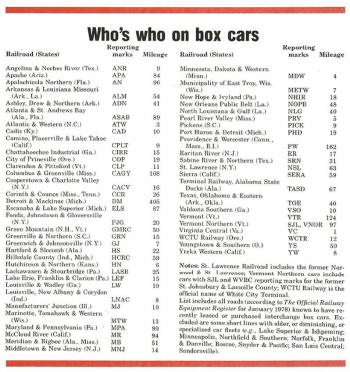
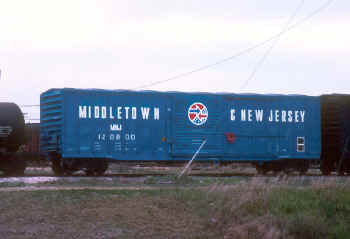
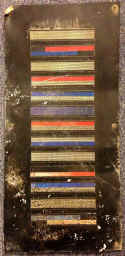
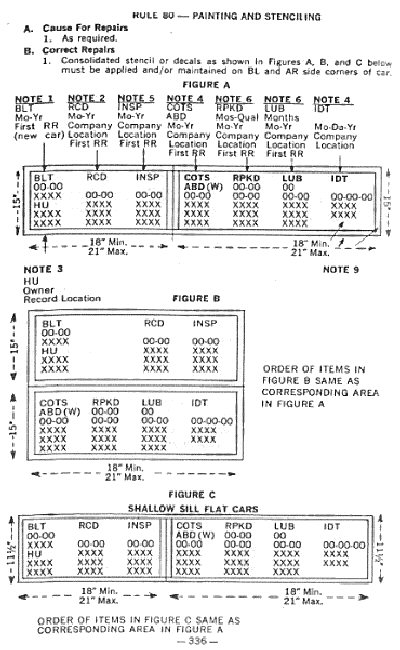
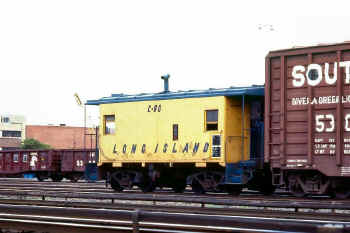
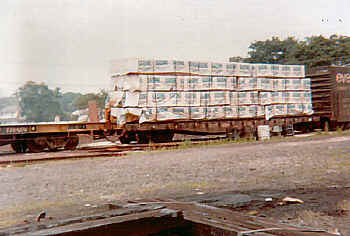
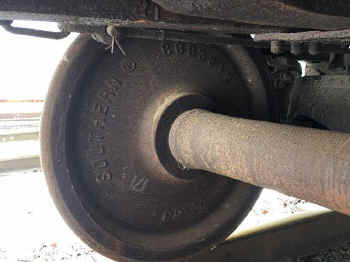
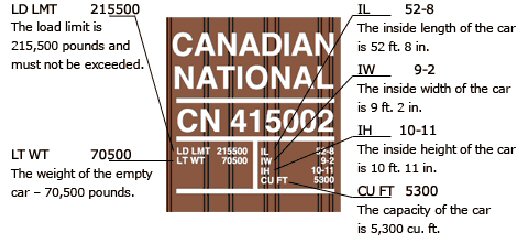 CAPY
(nominal capacity) is the intended load-carrying
capacity of the car, to the nearest 1000 pounds. This is
determined by the structural strength of the car's underframe
and the size of the journal bearings of the car's
trucks. This marking is no longer required as the actual
maximum load weight is determined by the load limit as described
below.
CAPY
(nominal capacity) is the intended load-carrying
capacity of the car, to the nearest 1000 pounds. This is
determined by the structural strength of the car's underframe
and the size of the journal bearings of the car's
trucks. This marking is no longer required as the actual
maximum load weight is determined by the load limit as described
below.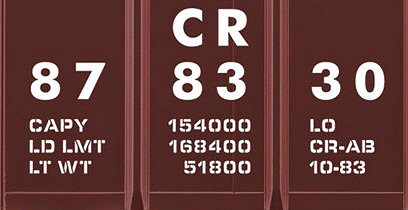 Car
Weight Date: This is the last location and date at which the
railroad or owner last verified the car was weighed to determine
its actual light weight. EXAMPLE: CR-AB 10-83. CR-AB ? indicates that this car was weighed by
Conrail at their Abrams Yard (near Philadelphia). Railroads
typically use their reporting marks and a two-letter yard or
shop code. NEW ? is often seen here and means that
the weight has not yet been calibrated since the car's as-built
weight.
Car
Weight Date: This is the last location and date at which the
railroad or owner last verified the car was weighed to determine
its actual light weight. EXAMPLE: CR-AB 10-83. CR-AB ? indicates that this car was weighed by
Conrail at their Abrams Yard (near Philadelphia). Railroads
typically use their reporting marks and a two-letter yard or
shop code. NEW ? is often seen here and means that
the weight has not yet been calibrated since the car's as-built
weight.